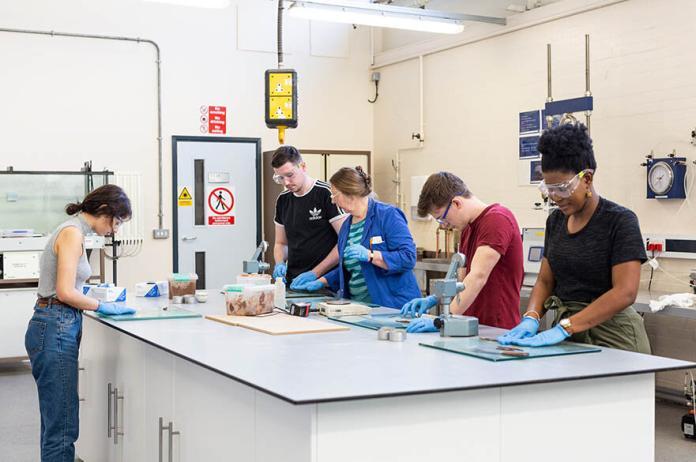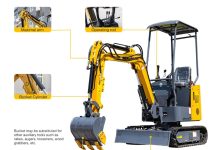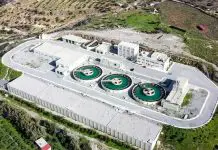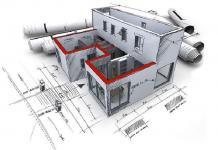Civil engineers oversee the design, planning, construction, and maintenance of public infrastructure. Although civil engineering undergraduate programs differ from university to university, some core courses are common to all programs. These courses cover the fundamentals of engineering mathematics, structural engineering, environmental engineering, soil mechanics, foundation engineering, construction management, fluid mechanics, and highway/transportation engineering.
Civil engineering is therefore the branch of engineering that deals with the design, construction, and maintenance of the physical and naturally built environment, including public works such as roads, bridges, canals, dams, airports, sewer systems, pipelines, and power plants.
Civil engineers play a vital role in society by designing and building the infrastructure that we all rely on every day. They work on a wide range of projects, from small-scale residential developments to large-scale public works projects. A Bachelor’s Degree is often required to be called an Engineer.

In the UK, a civil engineering undergraduate programme lasts for 3 to 4 years, while in the United States of America and Australia, it lasts for 4 years. In West African countries like Nigeria, civil engineering undergraduate programme lasts for 5 years, with a semester completely dedicated to industrial training. In South Africa, the average duration of a civil engineering undergraduate programme is 4 years.
The programmes are usually assessed through examinations, quizzes, lab work, coursework, and a final research or design project. The degrees awarded at the completion of the programme vary from university to university such as Bachelor of Engineering (B.Eng), Bachelor of Technology (B.Tech), and Bachelor of Science in Engineering (B.Sc Engineering).
A Bachelor’s degree in civil engineering is a sufficient requirement for someone to practice professional engineering, and to join professional bodies in Engineering. However, some work experience and professional examinations/interviews are usually required before someone can register as a professional or chartered engineer.

A civil engineering graduate may wish to specialise in the following areas during post-graduate studies;
- Structural Engineering
- Geotechnical Engineering
- Water Resources Engineering
- Environmental Engineering
- Highway and Transportation Engineering, and
- Construction Management
As a result, courses from these options are usually and compulsorily offered at the undergraduate level.
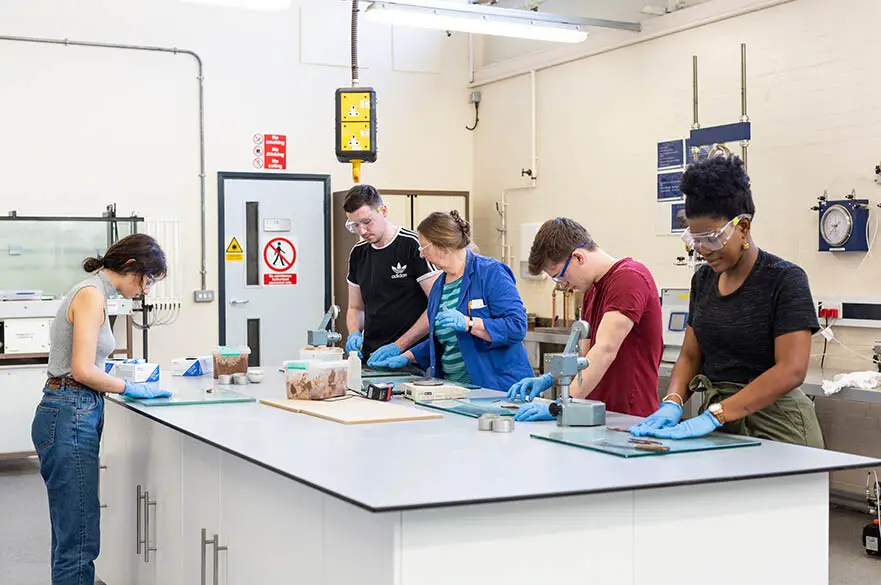
Core Curriculum for Civil Engineering
In most universities across the world, civil engineering students are usually required to take some basic/foundation courses in mathematics, physics, chemistry, applied mechanics, and general engineering courses in their first and second years. The third year, fourth year, and fifth year (as the case may be) are usually dedicated to the core civil engineering disciplines.
Some of the foundation courses for civil engineering undergraduate programmes are general mathematics, general physics, general chemistry, applied mechanics (statics and dynamics), engineering thermodynamics, applied electricity, engineering mathematics, etc.
Core Courses in Civil Engineering
The following are some core courses in civil engineering;
Fluid Mechanics
Introduction to incompressible viscous flow, laminar and turbulent flows, Reynolds number; boundary layer flow, lift and drag. Laminar flow – in pipes, between parallel plates. Turbulent flows – along a plate, in ducts and pipes. Physical hydraulic models. Interconnected pipes and pipe network analysis. Potential flows and application to flow nets. steady and unsteady flow in closed conduits; water hammer, surge tanks.
Strength of Materials
Advanced topics on axial, lateral and torsional loading of shafts. Beams. Emphasis on the bending moment and shear force diagrams in beams. Theory of bending of beams. Unsymmetrical bending and shear centre. Slope and deflection of beams. Castigliano’s theorem; Continuous indeterminate beams; Clapeyron’s theorem of three moments; slope deflection method; Strength theories stress concentration spring. Creep. Fatigue. Fracture. Stress concentration. Stresses in thin and thick cylinders. Rotating disks. Biaxial and Triaxial state of stress. Multi-dimensional stress systems. Mohr’s circle. transformation of stress. Strain energy. Closed-coiled Helical springs. Other types of springs.
Structural Mechanics/Theory of Structures
Analysis of determinate structures – beams, trusses; structural analysis theorems, graphical methods; application to simple determinate trusses. Influence lines. Williot-Mohr diagram. Deflection of statically determinate structures – unit load, moment-area methods, strain energy methods. Introduction to statically indeterminate structures.
Analysis of statically indeterminate structures including continuous beams, rigid frames, arches and trusses. Force and deformation method. Elastic curve, sue of symmetry, Effects of temperature changes and movement of supports, Influence lines and their application in moving load analysis, Moment distribution.
Soil Mechanics
Introduction to Soil Mechanics. Origin and formation of soils. Soil deposits. Soil properties. Specific gravity analysis of soils. Atterberg’s limits and indices, etc. Particle size distribution. Definitions and derivation of void ratio. Porosity. Specific gravity. unit weights/density. Degree of saturation. Weight Volume Relationships. Components of soil and phase diagram. Various unit-weight relationships.
USCS soil classification system. AASHTO soil classification system. Bousinesq problems in soil mechanics; stresses under uniformly loaded areas; elastic settlement of soil masses; Terzaghi’s effective stress principle; pore pressure parameters; Concepts of compressibility and consolidation; Introduction to Compaction of Soils. Hydraulic properties of soils. The capillary rise in soils. Hydraulic conductivity (k). Darcy’s Law. Estimation of hydraulic conductivity. Falling head and constant head permeability test.
Design of Structures I
Fundamentals of design process. materials selection. building regulations and codes of practice. Design philosophy; elastic design; limit state designs in concrete. principle of modular ratio and load factor method. Analysis using the Hardy Cross moment distribution. Analysis using the Clapeyron’s method. Theory of design of basic structural reinforced concrete elements. Design of structural elements in Reinforced concrete. Design of one-way slab. Design of two-slab. Design of flat slab. Design of beams and deflection checks. Types of columns, biaxially, uniaxially and axially loaded column. Short and slender column. Design of the different types of columns. Design of foundation base. Bending schedule and design project.
Design of Structures II
Steel design
Steel as a structural material, various kinds of structural steel, their properties and admissible stresses, application of steel in buildings, design of industrial structures, portal frames, steel trusses, design of gantry cranes, electric power transmission towers, communication towers, tanks, etc. specification, floor structures, primary and secondary beams, columns typical joint details, design of members and connections and particularities of design.
Timber design
Classification of structural timber, structural properties of natural wood, glued laminated timber and plywood, fire resistance, seasoning and preservation members in tension, compression and bending economic design of beams, columns and Diaphragm, compound structural members, design of timber connectors, application of timber in buildings, electric poles, bridges, forms and framework for concrete.
Civil Engineering Materials
Concrete Technology – types of cement, aggregates and their properties; concrete mix design, properties and their determination. Steel technology – production, fabrication and properties, corrosion and its prevention. Tests on steel and quality control. Timber technology – types of wood, properties, defects, stress grading, preservation and fire protection, timber products. Rubber, plastics, asphalt, tar, glass, lime, bricks and applications to buildings, roads and bridges.
Environmental Engineering
Theory and laboratory work for the design of physical, chemical, and biological processes for water and wastewater treatment. Design of stormwater and seepage collection systems. Importance of small waterworks; economical and safe water supply and treatment methods; individual and general waste disposal systems.
Water and wastewater quality (physical, chemical, biological and radiological). Water supply and design of unit operations. Water distribution design methods. Wastewater treatment design: waste stabilization ponds, activated sludge trickling filters, oxidation ditches. Introduction to environmental impact assessment.
Highway and Transportation Engineering
Introduction, history of Road development. Elementary traffic Engineering, Highway design, Highway project, introduction to volume computation, intersection and interchanges, traffic/Highway operation and management, Highway administration, systems, organizational structure, functional characteristics and classification, highway financing and road taxes, cost-benefit Analysis, review of soil mechanism, organization of highway construction projects, introduction to production and application of aggregates pavements. Problems with soils for road construction. Quality control of soil.
Introduction to pavements: design and maintenance of pavements. Highway drainage and drainage structures: culvert design and construction of channels, open ditches. Drainage requirements. Pavement of erosion and silting of side ditches. Protection of verges, side slopes, embankments against failures and erosion.
Geotechnical Engineering
Consolidation theory and settlement analysis: one-dimensional consolidation, theory, the oedometer tests, determination of coefficient of consolidation, Cv, preconsolidation pressure, normally and over-consolidated clays; analysis of total and time rate of settlement structures on soils (immediate/elastic settlement, primary settlement and secondary compression; sand drains).
Shear strength of soils: General strength consideration, state of stress at a point and Mohr stress circle, Mohr-Coulomb theory of failure, shear strength tests (direct shear test, triaxial test, unconfined compressive strength test, vane shear test), shear strength of consolidated clays, shear strength of saturated clays, shear strength of soils, residual shear strength parameters, pore pressure coefficients A and B.
Foundation design: types and choice of foundations.
-Shallow foundations; footings, rafts, design procedures.
-Deep foundations; piles, use and general characteristics of piles, piles in sand, pipe in clay, negative skin friction, pile group, bearing capacity and settlement of pile groups, efficiency of pile groups; caissons, types, loads on caissons, merit and demerits of different caissons, analysis and design of caissons.
-Special foundations.
Earth pressure theory and earth retaining structures:
lateral earth pressure theory (that is, active, passive and at rest pressures), earth pressure coefficients, computation of earth pressures using Rankine’s and Coulomb’s theories, Culmann’s graphical method, earth pressure on retaining structures, earth retaining structures: types and analysis of retaining walls; use of bracings as lateral support in open cuts; sheet piles and anchored bulkheads, fixed-earth and free-earth support methods of analysis, pressure distribution of sheetings, struts and walls; slurry trenches.
Slope stability:
types and mechanics of scope failures, theoretical and graphical solutions of scope stability problems, effect of tension cracks on slope stability, ordinary methods of slices.
Construction Management
Project management fundamentals – definitions, project environment, nature and characteristics, development practice, management by objectives, and the centrality of engineering to projects, infrastructures, national and global development. The scope of project management – organisational, financial, planning and control, personnel management, labour and public relations, wages and salary administration and resource management. Identification of project stakeholders; beneficiaries and impacted persons – functions, roles, responsibilities.
Project community relations, communication and change management. Project planning, control and timeliness;decision making, forecasting, scheduling, work breakdown structure (WBS), deliverables and timelines, logical frameworks (log frames), risk analysis, role of subject matter experts (SMEs), role conflicts; Gantt Chart, CPM and PERT. Optimisation, linear programming as an aid to decision making, transport and materials handling. Monitoring and Evaluation – key performance indices (KPis); methods of economic and technical evaluation.
Industrial psychology, ergonomics/human factors and environmental impact considerations in engineering project design and management. Project business case – financial, technical and sustainability considerations. Case studies, site visits and invited industry professional seminars. General principles of management and appraisal techniques. Breakthrough and control management theory; production and maintenance management. Training and manpower development. The manager and policy formulation, objective setting, planning, organising and controlling, motivation and appraisal of results.

